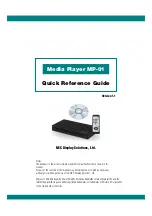
Goodrive350 IP55 High-ingress Protection Series VFD
Optional peripheral accessories
-349-
D.4.3 Cable arrangement
Motor cables must be arranged away from other cables. The motor cables of several VFDs
can be arranged in parallel. It is recommended that you arrange the motor cables, input power
cables, and control cables separately in different trays. The output dU/dt of the VFDs may
increase electromagnetic interference on other cables. Do not arrange other cables and the
motor cables in parallel.
If a control cable and power cable must cross each other, ensure that the angle between them
is 90 degrees.
The cable trays must be connected properly and well grounded. Aluminum trays can
implement local equipotential.
The following figure shows the cable arrangement distance requirements.
Figure D-4 Cable arrangement distance
Input power cable
Control cable
Control cable
Motor cable
Motor cable
Power cable
Min. distance: 200mm
Min. distance: 500mm
Min. distance:
300mm
D.4.4 Insulation inspection
Check the motor and the insulation conditions of the motor cable before running the motor.
1. Ensure that the motor cable is connected to the motor, and then remove the motor cable
from the U, V, and W output terminals of the VFD.
2. Use a megameter of 500 V DC to measure the insulation resistance between each phase
conductor and the protection grounding conductor. For details about the insulation
resistance of the motor, see the description provided by the manufacturer.
Note:
The insulation resistance is reduced if it is damp inside the motor. If it may be damp, you
need to dry the motor and then measure the insulation resistance again.
D.5 Breaker and electromagnetic contactor
You need to add a fuse to prevent overload.
You need to configure a manually manipulated molded case circuit breaker (MCCB) between
the AC power supply and VFD. The breaker must be locked in the open state to facilitate
installation and inspection. The capacity of the breaker needs to be 1.5 to 2 times the VFD
rated input current.
According to the working principle and structure of breakers, if the manufacturer's
regulation is not followed, hot ionized gases may escape from the breaker enclosure
when short-circuit occurs. To ensure safe use, exercise extra caution when installing
and placing the breaker. Follow the manufacturer's instructions.














































